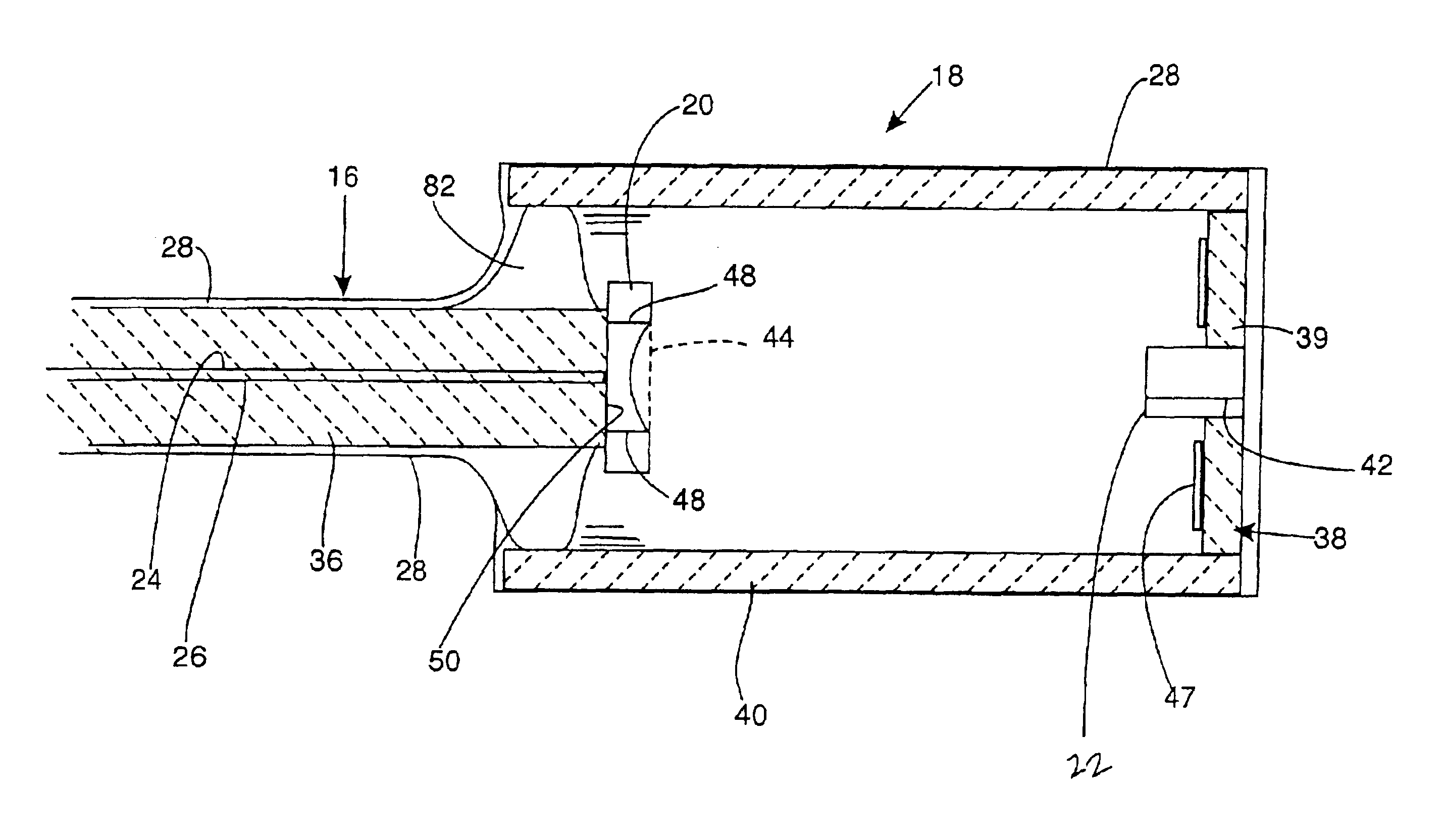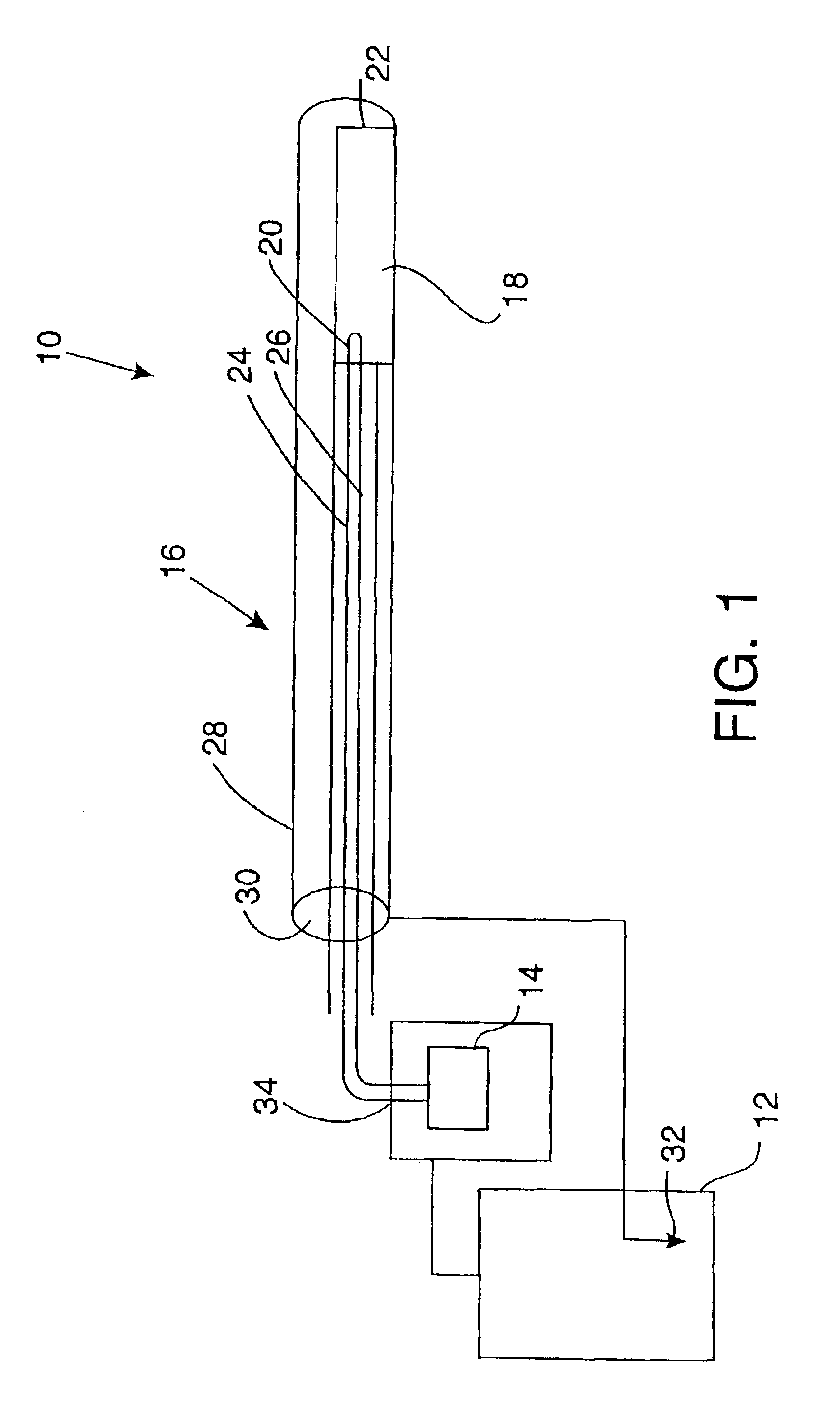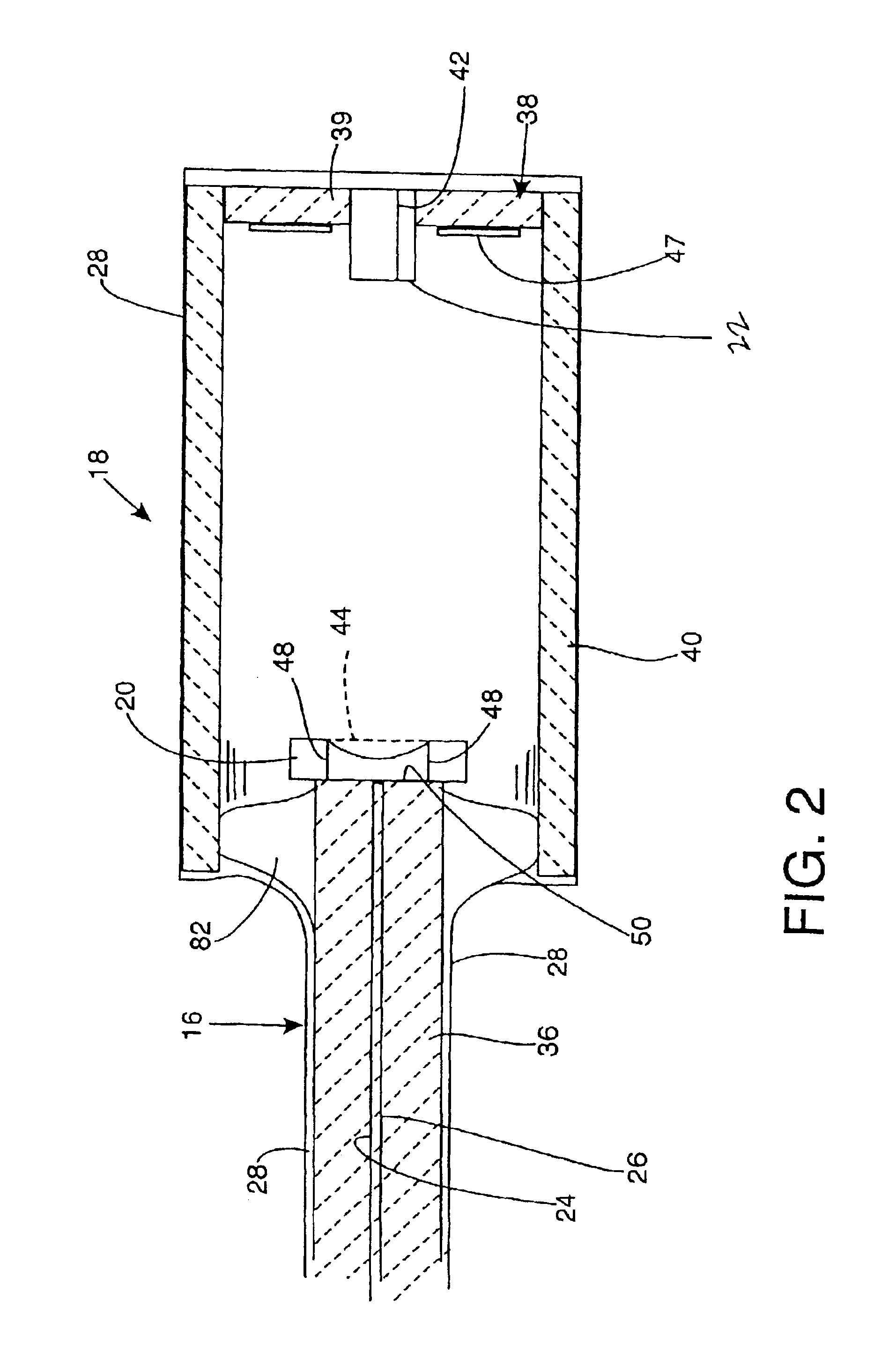Miniature x-ray tube with micro cathode
- Summary
- Abstract
- Description
- Claims
- Application Information
AI Technical Summary
Benefits of technology
Problems solved by technology
Method used
Image
Examples
Embodiment Construction
[0026]In the drawings, FIG. 1 shows schematically and not to scale the major elements of an x-ray device 10 for intra-vascular and other use in body cavities, comprising a controller 12 with high voltage power supply, a battery or other low voltage power supply 14, which can be included within the controller 12, a flexible probe line 16 extending from the controller, and a miniature x-ray tube 18 at a distal end of the flexible probe.
[0027]As indicated in this schematic drawing, the miniature x-ray tube includes a thermionic cathode 20 at a proximal end of the tube and an anode 22 at its distal end. The thermionic cathode is heated in a heater circuit involving two conductor wires 24 and 26 internal to the flexible probe line. These conductors are at low voltage relative to each other (e.g. about 2 to 50 volts), and are shown as being connected to the battery 14, although the battery could be replaced by another source of low voltage such as a transformer. These cathode heating curr...
PUM
 Login to View More
Login to View More Abstract
Description
Claims
Application Information
 Login to View More
Login to View More - R&D
- Intellectual Property
- Life Sciences
- Materials
- Tech Scout
- Unparalleled Data Quality
- Higher Quality Content
- 60% Fewer Hallucinations
Browse by: Latest US Patents, China's latest patents, Technical Efficacy Thesaurus, Application Domain, Technology Topic, Popular Technical Reports.
© 2025 PatSnap. All rights reserved.Legal|Privacy policy|Modern Slavery Act Transparency Statement|Sitemap|About US| Contact US: help@patsnap.com



